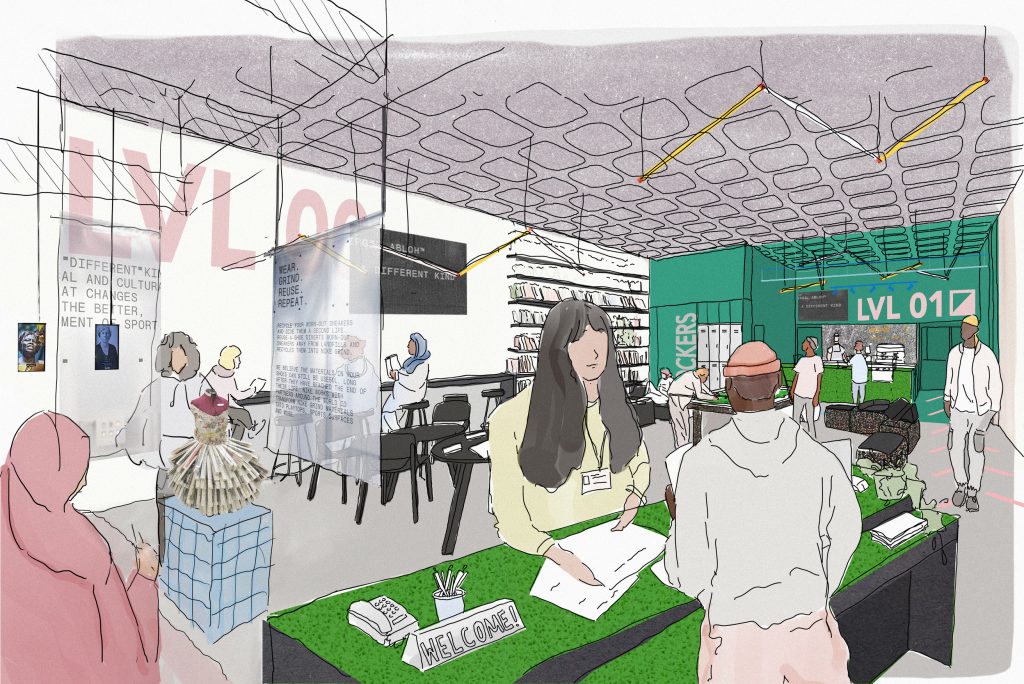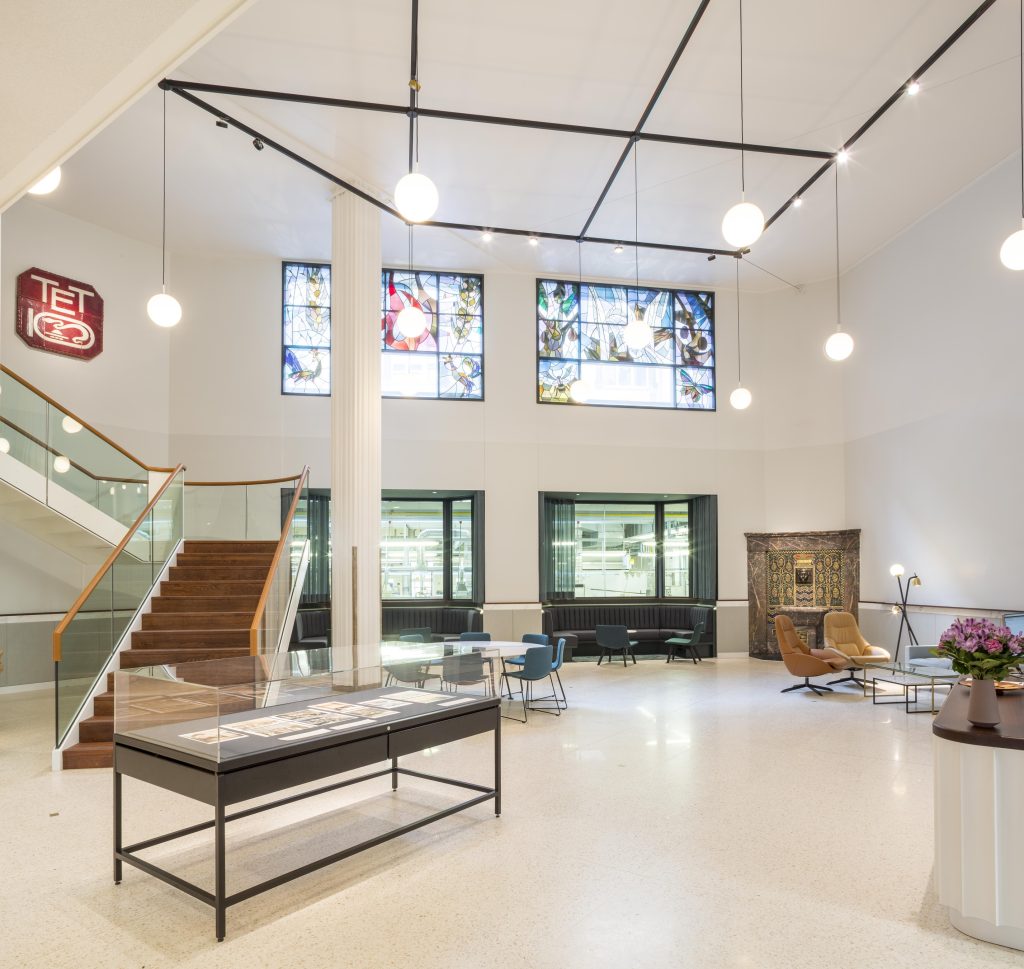Tom Bell and Jonathan Hagos, Founders of progressive architecture practice Freehaus, discuss serving their communities with conscious design.
Freehaus are a studio that passionately believes architecture has a positive role to play in society, and the team are rooted in empathy, equity, transparency and fairness.

Founded in 2012 by architects Tom Bell and Jonathan Hagos, they have spent the last decade building a reputation for sensitive and sustainable design projects, with social and environmental impact at their heart.
The Freehaus team have a host of ambitious residential, commercial and community projects under their belt, including the recently completed Africa Centre HQ in Southwark, London.
With plenty more to come from this progressive practice, we caught up with Founders Tom Bell and Jonathan Hagos to find out about their individual journeys and how they come to together as a studio.

What is your earliest memory of design and architecture?
Jonathan: My godfather lived in a beautifully decorated apartment in Amsterdam. Johan de Boer, or ‘Opa’ as I called him, was a furniture designer and his home was a palette of rich timbers, rattan, and the type of orange vacuum formed plastic that defined the late 70’s. My early memories of design were informed by him. My mother is a polymath and alongside her career in healthcare and education juggled commissions as an upholsterer and carpenter and so growing up around her craft (and graft) was an inspiration. She later become a restaurateur and was pleased to be able to design her restaurant for her!
Tom: I spent my formative years in Hong Kong, where I vividly recall the unique and ever changing built urban landscape set against high green peaks. I was captivated by the pace of change. I recall daily walks in the hills with our dog after school. I remember the moments we would stop to perch on little rocky outcrops for rest and witness the theatre of construction below. Mountains were moved, seas were reclaimed and the thud of piling always carried in the air. On a more intimate scale I fondly remember trips with my father to the newly competed Hong Kong and Shanghai Bank. It felt ceremonial to ascend the escalators and leave the hot muggy world below to enter the cool hive like atrium. It was captivating, inspiring, other worldly and it sparked a curiosity that would grow into a passion.

Where did you study?
Jonathan: I grew up in London and stayed close to my London roots and studied at the Bartlett School of Architecture at University College London for both my undergraduate and post graduate studies. I then went on to the University of Westminster for my professional qualifications (Part III).
Tom: I studied at Macintosh School of Architecture (BaHons – Year 1), University of Newcastle Upon Tyne (BaHons – Year 2&3), WilkinsonEyre Architects (Year 1 placement), Bartlett UCL (DipArch – Years 4&5), and Westminster University (Part III). I always wanted to obtain a rounded education with multiple perspectives. At the Macintosh School of Architecture I remember the rigour of hand drafting lessons and lectures by the late Gavin Stamp. At Newcastle we were encouraged to develop contextual designs, detail and explore environmental principles. This was counter balanced with two years of conceptual design exploration at the Bartlett under the tutorage of Andrew Holmes.

What kind of architect did you aspire to be?
Jonathan: I’ve always been interested in public buildings and architecture that shapes neighbourhoods and communities. I am also fascinated by the interplay between foreground buildings and the many background buildings that have an equal part to play in how we interact with the world around us. My own experience of designing civic buildings really began when I worked at Calderon Folch arquitectes in Barcelona in 2008, the practice really invested in an architecture that brings social value and actively engaged in co-design and co-authorship, well before they were fashionable working methodologies.
Tom: I have always been interested in how buildings work, how they are put together and how they perform. Chris Wilkinson and Jim Eyre used to talk about ‘bridging art and science’ which makes a lot of sense but I also aspire to create architectural outputs that afford end-user opportunity, nurture growth and deliver a legacy beyond the red line boundary. This was triggered by my year one summer school trip to Columbia in collaboration with the University of Bogotá. Where we built a prototype house for a rural community using bamboo and rammed earth techniques to explore a new sustainable vernacular using affordable modern methods of construction.

Who are your design/architecture inspirations?
Jonathan: We used to spend summers in the Netherlands visiting family and I remember seeing OMA’s Kunsthal in Rotterdam when I was around 15. It was my first memory of a building that felt like it actively invited and welcomed members of the public into it. I’ll never forget the feeling of walking past for the first time before being swept inside, by what felt like the building itself, and finding myself swept by these generous ramps that led me deep inside the building and the dynamic and eccentric spaces within.
I also hold the work of Bolles + Wilson in similar regard – in particular their public library in Munster which I was thrilled to interview them about recently for the Architecture Foundation. The early work of EMBT and Flores Prats both hold a strong space in my heart and my time earlier in my career practicing in Catalunya.
Tom: This is a hard question! I have a soft spot for Herman Hertzberger and his ability to craft thresholds, moments for interaction and give purpose to spaces in between.
What does Freehaus represent as an architecture firm?
Jonathan: We are a humble and attentive practice. We’re really not interested in egos and the architect at the centre of the room and of all things. At our core a call to using design to best serve our communities.

How do you continue to carve your own path in the industry as a studio and an individual?
Jonathan: We have always recognised that the success of any practice is how we balance and fuel the aspirations of the practice with that of the individuals that comprise our team. We want to use the practice to fuel our own ambitions and so it’s been exciting that we’ve each been able to undertake roles outside of the practice, whether that is lectures and talks, judging awards, as part of design review panels, as mentors for young people and as design champions in the industry.
I have a particular interest in working in existing buildings and promoting a more expansive and accessible definition of the subject of Heritage and Identity. The practice has been able to afford me the opportunity to further my interests here and so over the years I’ve become an RIBA Conservation Registrant to reflect my experience working in historic contexts and I was also Heritage Champion as part of the North Tottenham Townscape Heritage Initiative which supported a broader valuing of our local built environments. I am also currently working with several London churches as a Quinquennial Inspector and Parish Architect to help dovetail the community ambitions of our clients with necessary remedial work to the historic fabric of places of worship.
Tom: We are a hive of like-minded individuals with agency to pursue both personal and collective ambitions. Personally, I continue to explore my interest in environmental design and have recently qualified as a Certified Passivhaus Designer which has afforded me a greater understanding of building science, building performance, fabric first principles and the inadequacies of building regulations. In the context of the studio, we are interested in the role sustainable design can have to improve health and wellbeing and foster sustainable communities.

Where is the majority of your work based?
Jonathan: We are a London based practice and a lot of work is based in the city, especially in more suburban areas and smaller town centres. We are broadening our outputs and are excited to be working in Oxfordshire now that Tom is based in the area. We have had exciting commissions in Berlin and Hannover and continue to have outputs in Germany.
What has been your biggest design commission to date?
Jonathan: The City of London School for Boys project working in collaboration with Morris + Company has been our biggest commission to date. It’s a thrilling opportunity for us to be working on an education building of such scale and prominence and to be working with a truly collaborative and nurturing practice like Morris + Company has been really rewarding.

What does the face of architecture look like to you in 10 years time?
Jonathan: In 10 years I hope that the face of architecture looks and sounds more like the communities we are serving and moreover that the skillsets that architects can bring to the table are better valued, understood and celebrated.
Tom: I think we have the DNA and skills to create positive change in our society and in our environment. But we need to fight for these qualities to be valued over cost and short-term gains. To do so we need to be more embedded and representative of the communities we serve.

If you hadn’t become an architect what would you be doing?
Jonathan: An Astronomer or Cartographer, hopefully being able to combine both!
Tom: I don’t think it would have landed far from the nest. It would ultimately have to be creative. I sometimes think I’m a frustrated builder at heart. Perhaps a carpenter.
www.freehausdesign.com | IG: @freehausdesign








